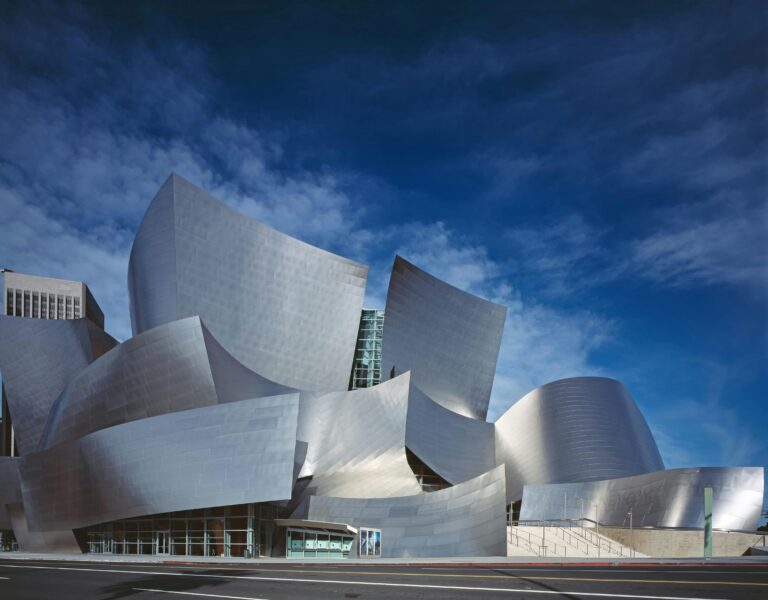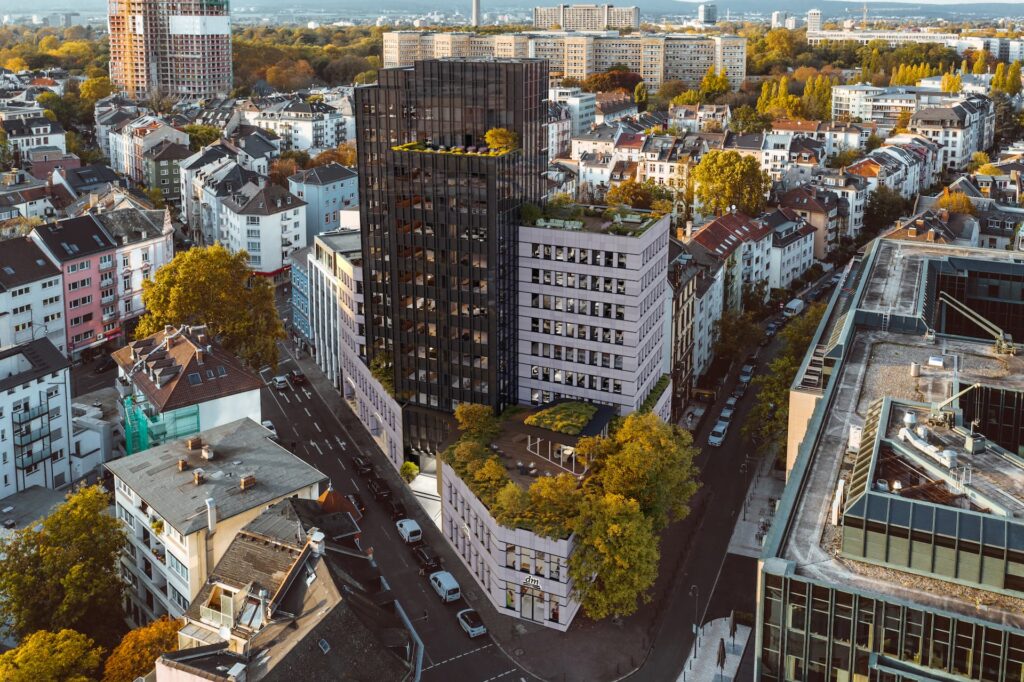Temporary architecture refers to structures or buildings that are only used for a short period. These can be structures like tents for festivals, pop-up shops, and emergency shelters during disasters.
The most interesting key features of these structures are that they are easy to move, flexible, and can easily adapt according to different needs.
Historically, people have used temporary structures for various reasons such as migratory groups and military camps. Overtime, making them more beneficial for today’s needs, technology has upgraded these designs.
Nowadays, temporary architecture has a significant role in dealing with emergencies such as hosting events and further creating sustainable solutions in cities. As the world changes rapidly, it’s becoming very important to have such designs that can be adjustable and are good for the environment.
To learn more about how temporary architecture is influencing the future of building design, you need to keep reading the article till the end!
Types of Temporary Architecture
Temporary architecture manifests in various forms, each uniquely tailored to meet specific needs and challenges across different contexts.
Event-Based Structures
Event-based structures such as temporary pop-up shops and festival tents are basically made for temporary use at events. They need to be flexible – allowing for easy setup and taking down. Most importantly, they also need to withstand various weather conditions.
These structures must have safety, balance functionality, and aesthetics; they should use lightweight, portable materials. They are the key for making events engaging and lively, despite the challenges in their construction.
Emergency and Relief Structures
Emergency and relief shelters play an essential role during crisis, conflicts or natural disasters. It offers immediate protection and comfort for the people who have been displaced.
These shelters often use modular designs that make them both effective and environmentally friendly, as they are easy to assemble and transport. New materials like biodegradable plastics or recyclable metals are used for their construction.
In unsettled conditions, quick setup and efficient deployment are important factors for saving lives and offering stability.
Exhibition and Pavilion Structures
Exhibition and pavilion structures are temporary buildings that are used for events like art shows in World Expos. Often with tight budgets and deadlines, they need to look perfect and work absolutely well.
Modular designs help as they can be easily compiled together, disassembled, and moved. They can have a lasting influence on future architecture as they allow for creative experiment.
Urban Interventions and Public Installations
Urban interventions and public installations are the temporary structures that are designed to improve public spaces and engage communities. For example it includes street furniture, temporary parks, and pop-up areas. They help in activating underused places and to test new ideas.
These interventions help in boosting community interaction and renew neglected spots, just like how a temporary part in a vacant lot can add green space and improve local life. Pop-up spaces can help in hosting events and markets that will make the city more vibrant.
Successful projects help in addressing what the community needs and how it offers smart, useful solutions. They display how temporary buildings can help create positive changes in society and make community connections stronger.
Materials and Construction Techniques
Your temporary architecture’s flexibility, efficiency, and sustainability can be achieved by utilizing innovative designs, materials, and construction techniques.
Sustainable Materials
You must focus on maintaining sustainability for a successful temporary architecture design by incorporating eco-friendly materials. Using materials like bamboo, hemp, and recyclable plastics has a low environmental impact. It is because you can easily assemble, disassemble, and reuse them, making them optimal for temporary architecture.
You can reduce waste, lower carbon footprints, and create safer and healthier structures using these materials. Case studies like a recycled cardboard pop-up pavilion prove that using sustainability in your temporary architecture can be both functional and aesthetically pleasing.
Lightweight Structures
Lightweight materials like aluminum, PVC, fabric, and aluminum can be ideal for your temporary architecture. It is because these materials offer strength, corrosion, and resistance, making your temporary architecture portable and easy to assemble.
You can create portable weather-resistant coverings using PVC and fabric. You can maximize the efficiency of these materials using designs like geodesic domes as they provide large and open spaces, allowing for quick assembly.
This lightweight feature provides you with the efficiency and durability required for your temporary applications.
Prefabrication and Modular Construction
The transformability of prefabrication and modular construction can benefit you in terms of cost, time, and environmental impact of your temporary architecture. You can reduce the construction time of your design or local disruption on-site by utilizing prefabricated components produced off-site for high quality.
Modular construction uses interchangeable sections that enhance flexibility by allowing you easy scalability and reusability. This helps you accelerate building, and reduce waste and costs as it cuts off the need for on-site activities.
Digital Fabrication and 3D Printing
Advancements in technology allow you to quickly and efficiently create customized and precise designs using digital fabrication and 3D printing for your temporary architecture. Digital Fabrication such as CNC machining and laser cutting allows you to generate complex designs aligning together seamlessly. This helps you reduce on-site adjustments.
3D printing allows you to rapidly produce complex on-site structures such as shelters and pavilions and rapidly deploy them. Moreover, it will also reduce your transportation costs. These technologies will represent the future of sustainable temporary architecture by allowing you to generate efficient and innovative designs.
Design Considerations
You must consider your design to ensure its adaptability, cost-effectiveness, and cultural relevancy for successful temporary architecture.
Functionality and Purpose
You must focus on the end-use of your design, whether it is for housing, exhibitions, or emergency relief when designing your temporary architecture. Make sure your structure is easy to assemble, use, and dismantle while meeting its intended purpose.
For example, your temporary housing should be private and comfortable. They should also be aesthetically appealing and functional. You must design a structure that is both practically and visually appealing by balancing its form and function. This will cut off the unnecessary complexity and costs of your design.
Adaptability and Flexibility
Your temporary architecture must be flexible and adaptable so it can easily meet the changing needs. The temporary structure frequently needs reconfiguring, relocating, or repurposing. Your design must be able to accept these shifts.
For example, modular designs allow you to make configurations according to the site’s requirements. You must have a flexible structure for emergency relief so it can easily adapt to rapid structure adjustments.
Case studies of mobile healthcare units and pop-up retail spaces show that your design must accept modifications or extensions to remain functional.
Cost and Budget Constraints
It is important to consider the cost and budget of your temporary architecture project to make sure it is functional within controlled cost. You can use cost-effective materials and reduce waste using efficient construction. You can use pre-fabrication to reduce labor costs. Using lightweight materials will also reduce your transportation costs.
You must choose an affordable material without compromising its durability. Making your structure reusable or recyclable also makes it difficult to manage costs. Managing the budget while maintaining functionality is the major challenge in temporary architecture.
Aesthetics and Cultural Context
Your temporary architecture must have aesthetics for events or public places but should also remain functional. You should create a design that is easily constructible, practical, and good-looking.
Your design should satisfy cultural and social factors, whether at a cultural festival or in a disaster zone. You must use a cultural environment that is compatible with the community and is functional as well. If you have a local stall, it will contain environmental architecture to blend with the environment.
Applications and Case Studies
Inspecting applications and case studies of temporary architecture helps you understand its impact on sectors from humanitarian aid to cultural events and urban planning.
Humanitarian Aid and Disaster Relief
Temporary architecture in humanitarian aid provides you with rapid shelter, support, and quick deployment which is crucial in an emergency. The Haiti earthquake incident in 2010 represents how temporary shelters saved lives.
Such structures must be durable and portable so they can provide you with protection. This serves as the first step of recovery from disaster, giving you an active response in permanent housing.
Festivals and Cultural Events
Temporary architecture is crucial at events like Glastonbury and Burning Man so you can have an immersive environment rapidly. At Glastonbury, temporary architecture turned the site into a cultural hub. On the other hand, Burning Man shows the use of structures like the Temple and the Man that are dismantled after use.
Such structures provide functional space and aesthetics to improve the local economy by attracting visitors and providing jobs. You can make innovative experiments because these structures are temporary
Urban Planning and Pop-Up Spaces
Temporary architecture can help you with renewal and revitalization during urban planning. Pop-up spaces like parks, cafes, and markets allow you to experiment with your new concepts. The High Line temporary project in New York City has inspired similar efforts globally.
Temporary structures allow you to test the space before any permanent development. Case studies from London and Berlin represent how pop-up helps you support local businesses using empty lots and engaged with community. It helps in creating urban areas adaptive and flexible.
Art and Exhibition Spaces
The use of temporary architecture in art and exhibition spaces provides you with both functional spaces and art pieces. Examples include pavilions at the Venice Biennale and the Serpentine Pavilion in London.
Different architects and artists experimented with different materials and techniques using their temporary nature. The Serpentine Pavilion, for example, eliminates traditional architecture and provides you with a connection between art and public space. It makes you do experiments and make new designs.
Challenges and Limitations
Temporary architecture also gives you unique challenges along with the benefits it provides. You must properly meet these challenges for a successful design.
Structural Integrity and Safety
The major challenge is the successful integrity of the structure and ensuring that it provides protection. Its durability is mostly ignored because you need it for a short time. You must carefully choose your materials and construction techniques so your structure can be immune to weather conditions and heavy use.
It can be difficult to maintain your structure while re-using it. You must regularly inspect and maintain your structure to make sure that your structure is strong.
Regulatory and Legal Issues
It can be difficult for you to follow legal policies due to building codes in different regions. Your temporary structure may not fit in it, causing difficulties in gaining permits.
Your designer must work closely with legal authorities and balance innovation with compliance in your project to avoid legal problems. Keeping these points in mind is crucial for the success of your temporary architecture in public places.
Environmental and Sustainability Concerns
Temporary architecture is considered more sustainable but it can also be an environmental problem (as waste) if they’re not recycled properly after their short lifespan.
Transportation and setup of your single-use structure can cause many environmental impacts. You can maintain sustainability using eco-friendly materials, proper reuse and recycling, and minimizing the carbon footprint of construction. However, these challenges can be a problem in low-budget projects.
Cost and Budget Management
Keeping the project within your budget while maintaining its durability is a difficult task. You have limited choices of materials and techniques when you’re tight on budget. It makes it difficult to maintain the safety and functionality of your project.
Managing the funding can also be difficult to maintain if you have an innovative design due to extended timelines and unexpected issues. You can use strategies like careful planning, value engineering, and using cost-effective materials to stay within your budget. But maintaining its quality is also a major concern.
Future Trends and Innovations
The Future of artificial architecture will contain innovative trends that will change how you design, construct, and use your temporary structure.
Advances in Materials and Technology
The formation of advanced materials such as biodegradable composites, advanced polymers, and 3D-printed materials is making your design more lighter, stronger, and more sustainable. It makes your structure sustainable and adaptive to any of your needs.
Advanced technologies and tools have made the construction of your structure a faster and more precise process. For example, robotic technology and AI-driven designing are influencing temporary structures and reducing the time and cost of projects.
Integration with Digital Tools
Digital tools such as CAD, BIM, and structural analysis play an important role in planning, designing, and constructing your temporary design. You can easily generate complex structures to meet your requirements.
Additionally, the future potential of VR and AR is massive as it allows you to visualize your structures before they can physically exist. This will help you make proper designs and manage clients properly
Sustainability and Eco-Friendly Designs
The focus of architects and designers on eco-friendly methods and sustainable designs will increase in the future. Pop-up buildings and modular designs are examples of sustainable projects as you make them from recycled materials and reduce waste.
These practices increase the sustainability of your temporary architecture designs and make them a standard for the industry. The demand for sustainable temporary architecture can increase with the increase in environmental concerns.
Expansion of Applications
The application of temporary architecture is expanding to new and emerging areas. Methods of how you use temporary architecture, in a global crisis range from disaster relief and humanitarian aid to flexible workspaces, and pop-up retail is increasing.
These structures serve as adaptive and cost-effective solutions because you can use them for various needs. It makes them an increasingly valuable tool for you. The future of temporary architecture is bright with revolutions in your current boundaries of making structures.
Conclusion
Temporary architecture is becoming very important as it can provide quick, flexible solutions for different needs, such as event spaces or emergency shelters. The benefits are that it can be set up quickly, it is cheaper than permanent structures, and it is eco-friendly.
While being both sustainable and cost-effective, its value comes from its ability to quickly address urgent issues. It addresses environmental concerns by minimizing waste, using eco-friendly materials, and designing structures for recycling or reusing that help reduce the environmental footprint.
Temporary architecture has different forms like disaster relief, events, and urban improvements. These are the types that show how flexible and useful temporary buildings can be.
As society changes, temporary buildings will become even more significant. Improvements in materials, design, and technology will keep making temporary buildings more advanced and better.
For solving big problems, temporary architecture is a key for problems such as limited resources, climate change, and urban expansion. Further, in the future it will keep providing fresh ideas that will make our spaces better as things change around us.
To support a sustainable future, use temporary architecture to quickly solve problems and address new needs!
FAQs
Q. What is temporary architecture?
Temporary architecture involves creating buildings that are used for a short time and then taken apart, moved, or changed once they are no longer needed.
Q. What materials are commonly used in temporary architecture?
Commonly used materials in temporary architecture include fabrics, lightweight metals, PVC, and sustainable options such as recyclable materials or biodegradable that are chosen for their easy setup and environmental benefits.
Q. How does temporary architecture address environmental concerns?
Temporary architecture addresses environmental concerns by minimizing waste, using eco-friendly materials, and designing structures for recycling or reuse. It helps in reducing their environmental footprint.







